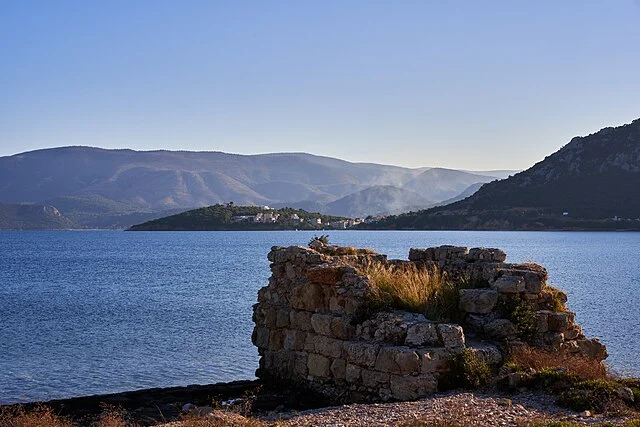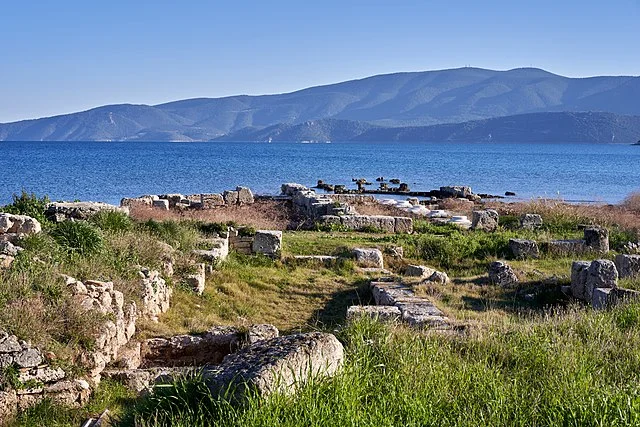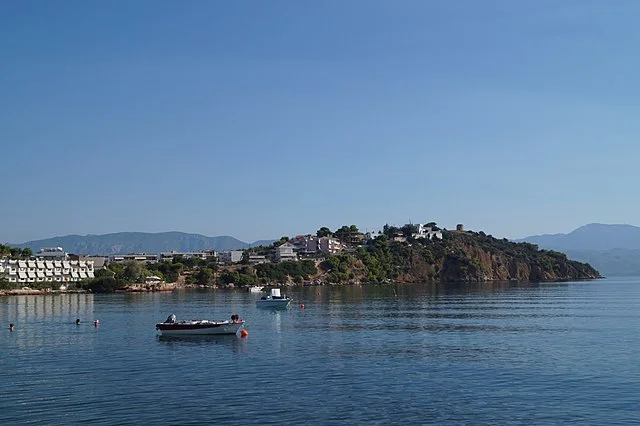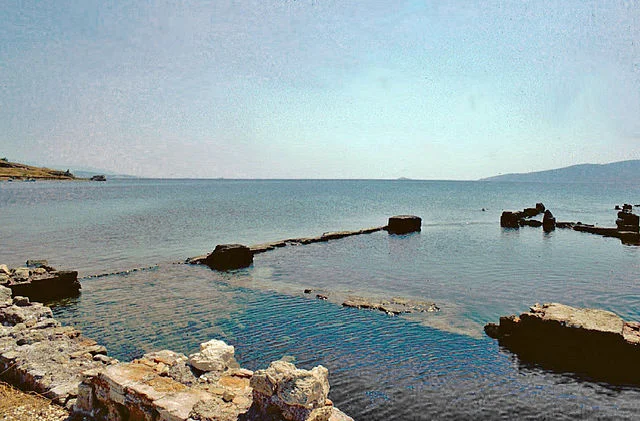Kechries, also known as Cenchreae, was a major eastern port of ancient Corinth. Located on the Saronic Gulf, it played a crucial role in the city’s trade and maritime activities. The port’s strategic position connected the Aegean Sea with the Isthmus of Corinth, allowing for efficient transport and trade across the Mediterranean.
Get your dose of History via Email
Historical Significance

The site was first developed during the Classical period (5th century BC) and flourished during the Roman era. The port served as one of Corinth’s two main harbors, the other being Lechaion on the Gulf of Corinth. Kechries facilitated trade with the eastern Mediterranean, particularly with regions like Asia Minor and Egypt. The Romans made substantial improvements to the port’s infrastructure, including the construction of breakwaters and warehouses.
In AD 52, during his second missionary journey, the Apostle Paul sailed from Kechries to Ephesus. This event is mentioned in the New Testament (Acts 18:18), highlighting the port’s importance for travel and commerce during the Roman period.
Archaeological Discoveries

Excavations at Kechries have revealed a wealth of information about its ancient use. Archaeologists uncovered remains of Roman-era piers, warehouses, and baths. Several temples were also discovered, dedicated to gods such as Poseidon and Isis. These findings emphasize the religious significance of the site in addition to its commercial role.
A key discovery was the statue of Asclepius, the god of healing, found within a sanctuary complex. This suggests that Kechries may have also been a pilgrimage site for those seeking medical treatment.
Decline and Abandonment

Kechries began to decline in the late Roman period, likely due to changes in trade routes and political instability. The silting of the harbor may have contributed to its abandonment. By the early Byzantine era (4th-7th centuries AD), Kechries had lost much of its significance.
However, its remains provide valuable insight into the maritime infrastructure of ancient Corinth. The site continues to attract interest from archaeologists and historians seeking to understand the economic and religious dynamics of the ancient world.
Conclusion
Kechries was a key port that played a vital role in Corinth’s economic and religious life. Its archaeological remains highlight the region’s importance in Mediterranean trade and culture. Today, it serves as a significant site for understanding ancient maritime history.
Source:

